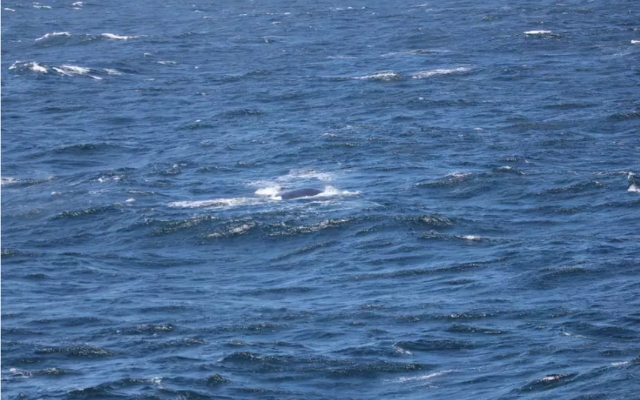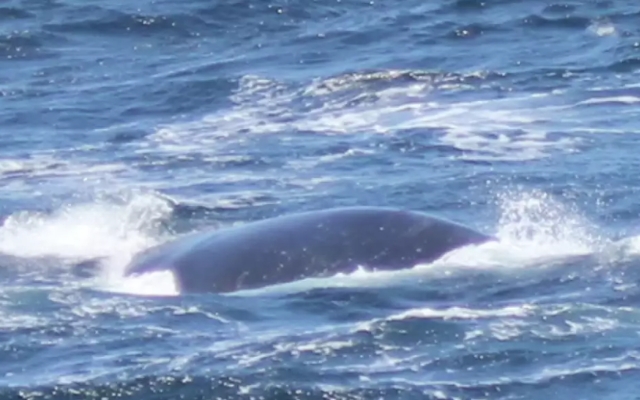A few miles from the shores of Point Reyes National Seashore, just north of San Francisco, researchers experienced a rare wildlife encounter in challenging sea conditions. Jan Roletto and Kirsten Lindquist, aboard the research vessel during heavy nine-foot swells, spotted an unusual marine giant last Friday.
“We clearly saw the V-shaped blow, no dorsal fin, all black, very broad,” said Jan Roletto, the research coordinator for the Greater Farallones and Cordell Bank national marine sanctuaries, during an interview with SFGATE. “It was darker than a humpback and not the shape of a humpback.”
The mysterious creature turned out to be a critically endangered North Pacific right whale, recognized as one of the world’s rarest whales with only about 30 of these whales estimated to remain.
The sighting occurred while Roletto and Lindquist were on a weeklong mission to observe and record marine wildlife as part of the Applied California Current Ecosystem Studies. This project is a joint effort involving the Greater Farallones, Cordell Bank national marine sanctuaries, and Point Blue Conservation Science. Despite the uncooperative weather, with strong winds whipping up the ocean surface, the team persisted in their research efforts.
Roletto explained how the conditions forced them to seek shelter, a move not commonly needed for their robust research vessel. “We had to spend a full day in Drakes Bay for shelter, which is quite unusual for this ship,” she remarked. During their expedition, they noted multiple blue whales surfacing each day, a surprisingly high number for the season, indicating an early gathering of these giants in the area. However, the appearance of the North Pacific right whale was unexpected.

Before the encounter, the team was conducting a CDT, a scientific measurement that records the conductivity, temperature, and depth of ocean water. While their vessel was stationary, the right whale approached within about 650 feet, close enough for them to observe its distinctive callosities—rough patches of white skin on its head, marking it as a North Pacific right whale.
“It would blow, sink, blow again, about 2-3 times, then sink down for a few minutes,” Roletto described, highlighting how the whale interacted with the rough sea conditions. Despite the close proximity of the research ship, the whale seemed undisturbed, not reacting to the vessel’s movements even after Roletto requested the captain to steer clear to avoid disturbing the whale. Although they returned to the spot later that evening, there was no further sign of the whale.
This sighting marked a significant event as it was the first time this species had been observed in the Bay Area in more than a year. The most recent prior sighting had been in Monterey Bay in March 2023, which at the time was only the 18th confirmed sighting of this species off the California coast since 1955.
“Local sightings of North Pacific right whales are incredibly rare,” Giancarlo Rulli, a spokesperson for the Marine Mammal Center, informed SFGATE.

The encounters with these whales are particularly valuable for conservation efforts. Despite facing threats like entanglement in fishing nets, collisions with ships, oil spills, and noise pollution, these sightings provide crucial information that helps researchers track the whales’ migration patterns and breeding sites. Recent observations of mostly healthy whales, showing few signs of injuries from human activities, have given scientists hope for the species’ potential recovery.
Jessica Crance, a marine biologist with NOAA’s Alaska Fisheries Science Center, emphasized the significance of each sighting. “These animals are the proverbial needle in a very large haystack,” she mentioned earlier in a NOAA podcast. Every observation contributes to the ongoing efforts to understand and protect these magnificent yet critically endangered creatures, underscoring the importance of continuous marine monitoring and conservation strategies.
 Toledo, United States.
Toledo, United States.